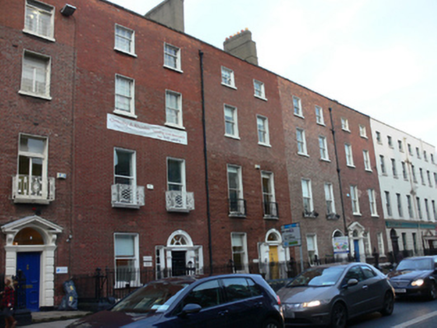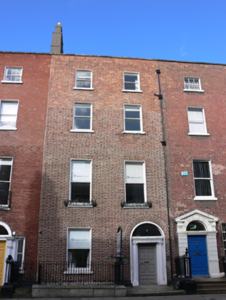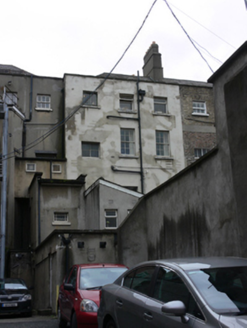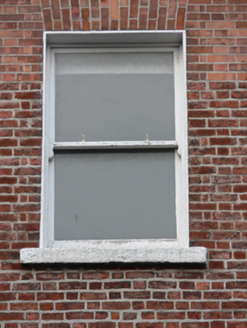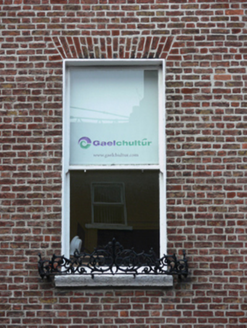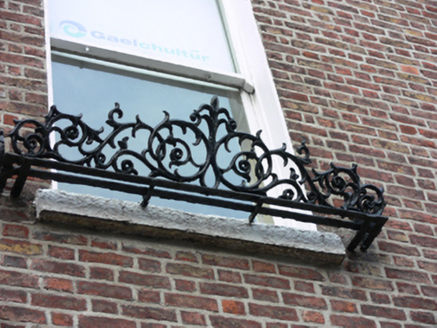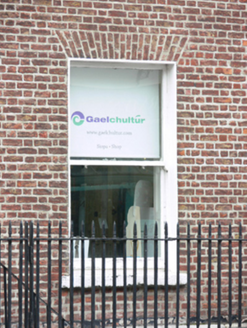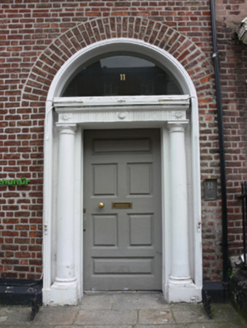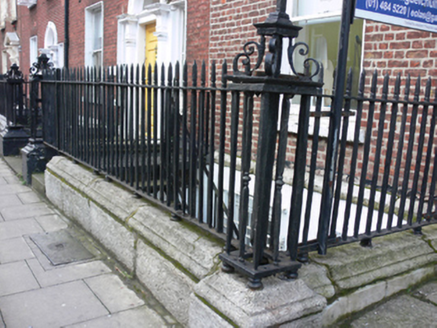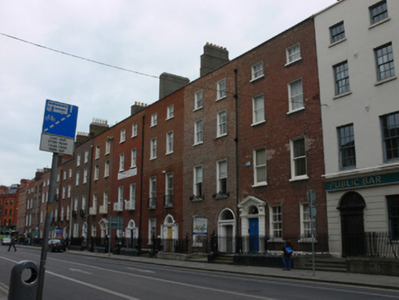Survey Data
Reg No
50020462
Rating
Regional
Categories of Special Interest
Architectural, Artistic, Historical, Social
Original Use
House
In Use As
Office
Date
1760 - 1780
Coordinates
316530, 233762
Date Recorded
24/03/2015
Date Updated
--/--/--
Description
Terraced two-bay four-storey former house over basement, built c.1770, having recent addition to rear (north-east) elevation. Now in use as offices. U-plan hipped slate roof concealed behind red brick parapet with granite coping, rendered chimneystacks. Repointed red brick, laid in Flemish bond, to wall to front (south-west) elevation, carved granite plinth course over smooth rendered walls to basement, smooth rendered wall to rear. Square-headed window openings with raised render reveals, masonry sills, decorative cast-iron balconettes to first floor, and one-over-one pane timber sliding sash windows. Some six-over-six pane timber sliding sash windows, and some replacement windows, to rear. Round-headed door opening having moulded masonry surround, masonry Doric-columns, entablature with marigold details and fluting to cornice, plain fanlight, and timber panelled door. Wrought-iron railings having matching gate and square-profile open-work piers on carved granite plinth wall enclosing basement area. Set back from Clare Street, approached by granite step with cast-iron bootscrapes.
Appraisal
Clare Street was developed c.1762 by John Ensor for the sixth Viscount Fitzwilliam. This well executed Georgian terraced town house retains, Casey (2005), its original internal plan form. The well-executed doorcase, with marigolds and fluting to the cornice, adds elegance to the composition, while the timber sash windows add to the historic character of building and streetscape. Cast-iron is used to good effect to enliven the façade, notably the decorative sill guards and railings, adding decorative interest. The stable lane to the rear, now much reduced in size and known as Merrion Close, provided access to the associated mews building. The house was, in the 1860s, occupied by Michael Donovan, an apothecary. This area of Dublin was well served with healthcare professionals, possibly due its proximity to the nearby hospitals and Turkish Baths.
